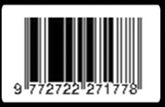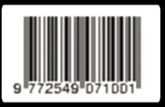PENERAPAN METODE HEURISTIC EVALUATION UNTUK ANALISA USABILITY PADA APLIKASI IDENTITAS KEPENDUDUKAN DIGITAL
Abstract
Dukcapil to meet the need for community population data to a smartphone to build IKD (Digital Population Identity). Digital Population Identity (IKD) is electronic information that is usually used to represent population documents, feedback data, in a digital application based on a smartphone that displays data as the identity in question. However, from user assessments obtained through Playstore, several problems were found, such as the fact that the document resolution was low so that the resulting display was less clear and less comfortable to read, the document download function was not yet available, some documents often failed to display, and when logging out or uninstalling the application is difficult to log in again. Based on this problem, an evaluation performed using the HE method (Heuristic Evaluation). This method was chosen to test the Digital Population Identity program to find usability problems in the Digital Population Identity application which is based on 10 heuristic method principles so that improvements can be obtained. To test the statements in the questionnaire, researchers used validity tests and reliability tests. Determining the priority scale for application improvements using severity rating using the index calculated from the Heuristic evaluation. This research resulted in a usability analysze IKD application using the HE method (heurisctic evaluation), that of the level of usability of IKD program had Cronbach's Alpha 0.973 from 27 statements, which means that the reliability IKD application is very reliable. Recommendations for improving the Digital Population Identity application for problem codes PM23 and PM27 can used as a reference improving this program so it can meet user needs.
Full Text:
PDFReferences
Ahmad, M., & Nasution, D. P. (2018 ). “Analisis Kualitatif Kemampuan Komunikasi Matematis Siswa Yang Diberi Pembelajaran Matematika Realistik”. Jurnal Gantang. 3(2), pp. 83–95. https://doi.org/10.31629/jg.v3i2.471
Ardhana Putri, L., Ihsan Said, M., & Hasan, M. (n.d.). (2023). “Analisis Pemasaran Digital Barang Elektronik:Pada Toko Computer Di Yogyakarta”. INTELEKTIVA. Vol. 4 No. 7. pp. 34-50 Maret.
Ardiansyah, S., Sofyan, M., & Asman, H. (2019). RANCANG BANGUN E-COMMERCE TOKO FURNITURE. Jurnal Informatika. 8(1). http://ejournal.unidayan.ac.id/index.php/JIU
Aswidani. (2023). ”Mengukur Usability Pada Website Simak Universitas Khairun Menggunakan Heuristic Evaluation Methode”. Journal Of Comprehensive Science. Vol. 2 No. 10. pp. 1628-1635 Oktober.
Dewi, I. K., Mursityo, Y. T., Regasari, R., & Putri, M. (2018). “Analisis Usability Aplikasi Mobile Pemesanan Layanan Taksi Perdana Menggunakan Metode Webuse dan Heuristic Evaluation”. Jurnal Pengembangan Teknologi Informasi dan Ilmu Komputer. Vol. 2 No. 8. pp. 2909-2918 Agustus. http://j-ptiik.ub.ac.id
Gusti, I., Agung, A., Indrayani, D., Putu, I., Bayupati, A., Made, I., & Putra, S. (n.d.). (2020). “Analisis Usability Aplikasi iBadung Menggunakan Heuristic Evaluation Method”. Jurnal Ilmiah Merpati. Vol. 8 No. 2 Agustus.
Handayani, S. A., & Nurhayati, E. (n.d.). (2021). “Perancangan Dan Pengembangan Produk Smarthphone Menggunakan Metode Quality Function Deployment (Qfd)”. Prosiding Seminar Nasional Multi Disiplin Ilmu Dan Call For Papers. pp. 635-642. Juli.
Indrajaya, D. (n.d.). (2018). “ANALISIS KUALITAS PELAYANAN TERHADAP TINGKAT KEPUASAN KONSUMEN MENGGUNAKAN METODE IMPORTANCE PERFORMANCE ANALYSIS DAN CUSTOMER SATISFACTION INDEX PADA UKM GALLERY”. Jurnal IKRA-ITH Teknologi. Vol. 2 No. 3. pp. 1-6 November.
Lestari, D.-, Rohaniati, N., & Rahmayu, M. (2022). Analisis Evaluasi User Interface Dan User Experience Pada Aplikasi Majoo Dengan Metode Heuristic Evaluation (Studi Kasus : Speed Karunia Cipta). Media Jurnal Informatika, Vol. 14 No. 2. pp. 97-103 Desember. https://doi.org/10.35194/mji.v14i2.2553
Mustikarani. T. Diyanti, dan Irwansyah. (2019 ).“Pemanfaatan Teknologi Informasi Dan Komunikasi Dalam Industri Fashion Indonesia”. Warta ISKI. vol. 2 no. 01 pp. 8-18.
https://doi.org/10.25008/wartaiski.v2i01.23
Noor, A., & Hadisaputro, E. L. (2022). Analisis Pengalaman Pengguna Pada Aplikasi TIX ID Menggunakan Metode User Experience Questionnaire. Journal of Information System Research (JOSH), 3(4), 672–677. https://doi.org/10.47065/josh.v3i4.1881
Setyoningsih W, Khoiriyah L, & Qn, N. (n.d.). (2018). “Pembuatan Pangkalan Data Elektronik Kelurahan Muktiharjo Kidul Pedurungan Semarang”. Jurnal Informatika, Vol.2 Nomor 1. pp. 18-30 Juni.
Wasiati, H., & Sudarmanto, D. (n.d.). (2022). “Analisis Usability Menggunakan Metode Heuristic Evaluation Pada Aplikasi Toko Online”. UPAJIWA DEWANTARA. Vol. 6 No. 1. pp. 11-30 Juni.
Yolanovia1, D., & Dwi, A. (n.d.). (2021). “Evaluasi User Experience Aplikasi TIX ID Menggunakan Metode Heuristic Evaluation”. JEISBI, 02.
Zulfidiana, Z., Yunardi, D. H., & Mutiawani, V. (2023). “Rancang Bangun Aplikasi Pengujian Usability Berbasis Web”. J-SIGN (Journal of Informatics, Information System, and Artificial Intelligence). 1(01). pp. 58–70.. https://doi.org/10.24815/j-sign.v1i01.31805
DOI: http://dx.doi.org/10.31000/jika.v8i2.10102
Article Metrics
Abstract - 1683 PDF - 1847Refbacks
- There are currently no refbacks.

This work is licensed under a Creative Commons Attribution-ShareAlike 4.0 International License.
INDEX BY :
 |
 |
 |
 |
 |
 |
 |










 Jurnal Of Informatics (JIKA)
Jurnal Of Informatics (JIKA) 